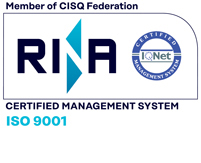Iran
TEHRAN-BERLIN TRADE SEES 4% RISE
Shahin Asghari, President of the Iran-Germany Chamber of Commerce and Industries, spoke to ILNA about the latest trade developments between the two countries.He stated that based on the latest statistics, the trade value between Iran and Germany during the first ten months of 2024 (January to October) reached $1.24 billion. This figure represents a 4% increase compared to the same period in 2023. During this time, Iran’s imports from Germany grew by 7% annually, while Iran’s exports to Germany declined by 9% annually. The trade balance favors Germany, with Iran’s imports from Germany significantly surpassing its exports.Asghari noted that although Iran has strong potential to supply raw materials for German industries, it has yet to fully utilize this capacity. Iran predominantly imports industrial machinery and chemicals from Germany, while exporting mainly food products and livestock to Germany.Reflecting on the trade history between the two countries, Asghari remarked that 50 years ago, when the Iran-Germany Chamber of Commerce was established, Iran was the second-largest market for German exports after the United States. Even after the revolution, Germany maintained its trade relations with Iran, historically leading European trade with Iran. Over the past century, Iran and Germany have shared strong cultural and commercial ties, with Iran being well-known to German industrialists and traders. Iran’s industrial sector has developed with German machinery. However, in recent years, bilateral relations have somewhat weakened.Despite this, Asghari emphasized that trade between Iran and Germany continues. Iran’s exports to Germany consist of non-sanctioned goods. German companies willing to continue trading under sanction conditions are typically small and medium-sized enterprises with limited business ties to the U.S.He added that Iranian carpets and handicrafts once enjoyed significant popularity in Germany, with Iranian carpets regarded as luxury items. German households once took pride in owning them. However, this market has shrunk, with Indian and Turkish producers now dominating the German carpet market. Similarly, products like pistachios, dates, walnuts, and saffron are common in Germany, yet Iran’s market share for these items is declining. For instance, Afghanistan is increasingly capturing the global saffron market from Iran.Asghari attributed the weakening Iran-Germany trade to various internal and external factors. He explained that this challenge extends beyond Iran-Germany trade. For example, in Iraq—a major destination for Iranian exports—non-Iranian traders sell goods on one-year letters of credit (LC), while Iranian traders must operate on a cash basis. This preference for LC over cash among Iraqi buyers reduces Iranian traders’ competitiveness. Additionally, Iranian traders bear extra costs for currency exchange at money changers.Similar challenges persist in Iran’s trade with European countries. Asghari stressed that failure or unwillingness to comply with international trade regulations results in Iran losing its global market share. (ICE TEHERAN)
Fonte notizia: MEHR NEWS AGENCY




